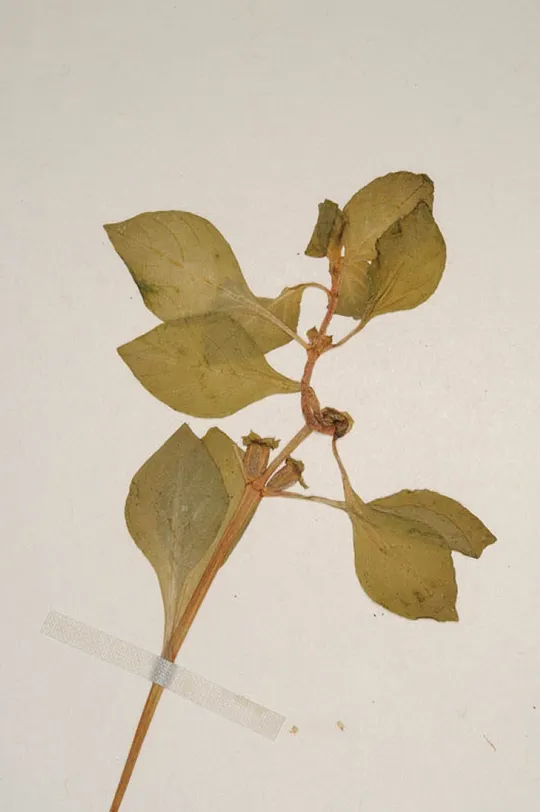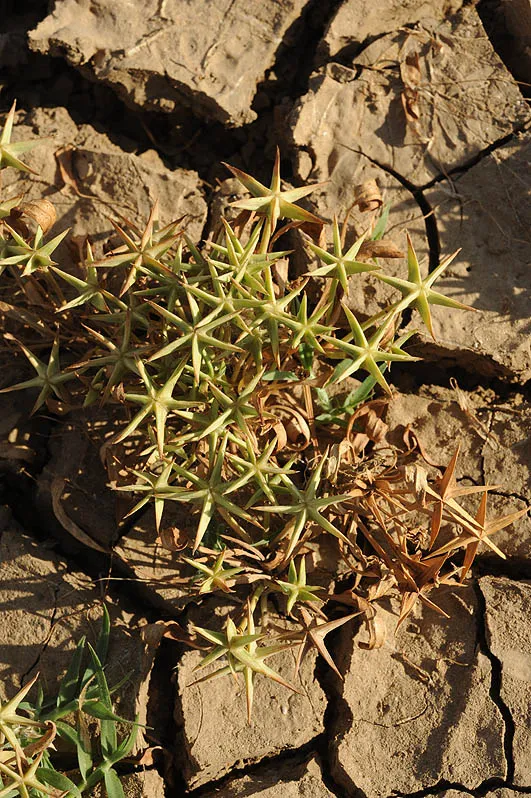Common Water Purslane, Marsh Seedbox
Ludwigia palustris

Zohary and D’Angelis collected Ludwigia
palustris a single time in the Hula marshes in the Hula Valley in 1951. Following the drainage of the Hula, the species disappeared
and has not been found again in Israel.
Permanent aquatic
habitats – springs, streams, ponds and marshes, generally with slow flowing
water.
The
genus Ludwigia is a large genus in the Onagraceae family that includes
75 species, mostly found in aquatic habitats. Most species in the genus grow in
North America. The second Ludwigia species growing in Israel is L. stolonifera. The previous scientific name of the
genus was Jussiea.
Ludwigia
palustris is extinct in Israel, and was previously known only
from one site – in the Hula Marsh before the drainage, in one region – the Hula
Valley. Due to the lack of information, the possibility that the plant is
accidental in Israel cannot be excluded.
·
There is no
information from Israel regarding the size of the Ludwigia palustris
population or populations that were once here, nor is there information from other
countries in the Mediterranean Basin.
•
The direct cause
of extinction was the drainage of the Hula marshes.
•
From a global
perspective, the plant is has an IUCN threat category of “near threatened"
(NT). Dozens of sites exist in the Iberian Peninsula, France and in the Maghreb
countries. In the Eastern Mediterranean Basin countries, only a few sites are
known. In Switzerland its status is "critically endangered" (CR) and
in the Carpathian Mountains it is "endangered" (EN).
Ludwigia
palustris should be reintroduced gradually to the refuge garden
in the Hula Valley and subsequently to marshy areas in the lake, while it is
studied and monitored. The reintroduced plants should be from a geographically
close source, such as Turkey.
Ludwigia palustris is found throughout
the northern temperate region – in Europe, Asia and America. It grows in most of
the countries and islands bordering on the
Mediterranean Basin: Spain, France, Corsica, Italy, Sardinia, Croatia, Albania,
Greece, Bulgaria, Turkey, Syria, Lebanon and in the countries of the Maghreb –
Tunisia, Algeria and Morocco. In the Maghreb countries, it is relatively common.
Ludwigia
palustris is a perennial grass of wetlands, which has become
extinct in Israel following the drainage of the Hula marshes. It is still not globally
endangered, but is approaching the threshold of a threat. It should be
reintroduced in a controlled manner to the Hula Lake and should be monitored
there.
Current Occupancy Map
| 1000 squre meter pixel | 5000 squre meter pixel | 10000 squre meter pixel | |
|---|---|---|---|
| number of observations | 0 | 0 | 0 |
| in total pixels | 0 | 0 | 0 |
| Family | Onagraceae |
| Classification | On the endangered species list |
| Ecosystem | Mediterranean humid |
| Chorotype | Tropical - Pluri-regional |
| Conservation Site | Agamon HaHula |
| Rarity |
1
6
6
|
|---|---|
| Vulnerability |
0
4
4
|
| Attractiveness |
0
0
4
|
| Endemism |
0
0
4
|
| Red number |
1
-1.0
10
|
| Peripherality | 0 |
| IUCN category | DD EW EX LC CR EN VU NT |
| Threat Definition according to the red book | Extinct |
 Based on:
Based on:






